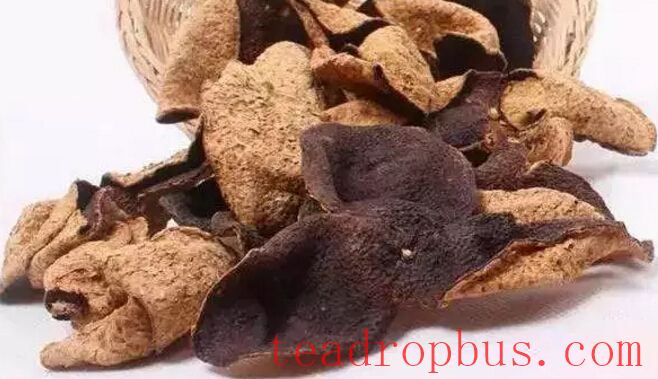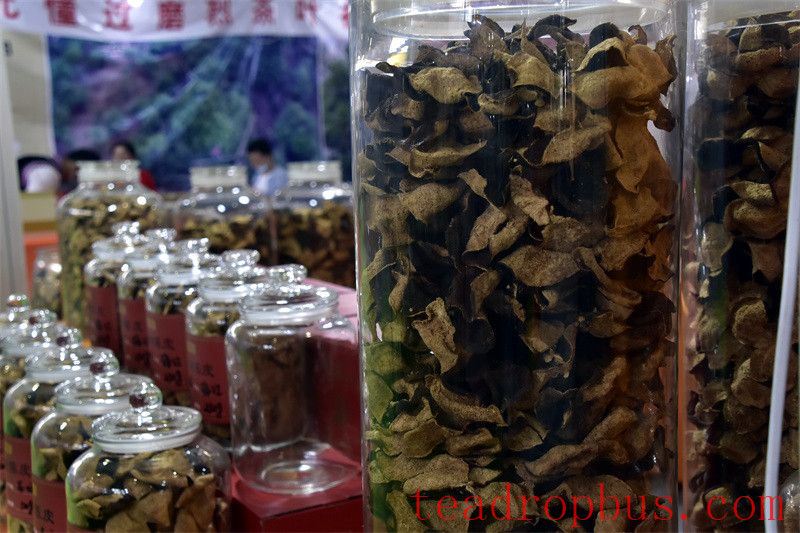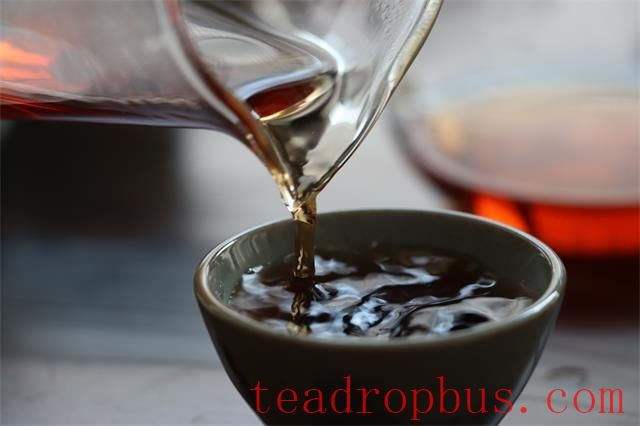Spring returns, and all things in nature are rejuvenated. It brings new hope and aspirations. Spring is the most beautiful anticipation of the world. After enduring the cold winter, time prospers, and everything has its own rhythm. The four seasons come and go, interweaving into the passage of time. With the renewal of all things, our bodies also change along with the seasons.
Recently, the TV series “The Knockout” became very popular, and the character Gao Qiqiang was particularly fond of drinking dried tangerine Peel Tea. Many tea enthusiasts have followed suit and started drinking it as well. Is dried tangerine peel only good for the throat as mentioned in the show? Actually, there's more to it…

In Traditional Chinese medicine, dried tangerine peel is considered to have a pungent and slightly bitter taste, and is warm in nature. It targets the spleen, stomach, and lung meridians. According to “Shennong's Classic of Materia Medica,” dried tangerine peel is “aromatic and pungent, capable of regulating qi and harmonizing the middle energizer, promoting orderly movement.” In summary, dried tangerine peel has the effects of regulating qi, strengthening the spleen and stomach, stopping coughs, and reducing phlegm. Beyond these inherent properties, it also excels at harmonizing with other herbs. “Compendium of Materia Medica” records that dried tangerine peel: “is bitter and can drain dampness, pungent and can disperse and harmonize; its treatment of various diseases always relies on its ability to regulate qi and dry dampness. When paired with tonifying herbs, it tonifies; when paired with purgative herbs, it purges; when paired with ascending herbs, it ascends; when paired with descending herbs, it descends.” Its mild nature allows it to harmonize with many herbs, and it plays an assisting role, which is truly remarkable.
Dried tangerine peel has been a favorite of people in Guangdong since ancient times. In terms of value, there is the saying “an ounce of aged tangerine peel is worth an ounce of gold, and a hundred-year-old tangerine peel is better than gold.” In terms of efficacy, it is known as “a thousand-year ginseng, a hundred-year-old tangerine peel.” On the dining tables of Guangdong, “tangerine peel red bean soup” is a standout among Cantonese desserts, and “tangerine peel beef balls” are one of the most beloved dim sum dishes. The love for Xinhui tangerine peel in Guangdong cannot be fully explained in just a few words…
In addition to its high medicinal value, the unique aged aroma of Xinhui tangerine peel makes it a famous spice and seasoning in ancient China, enjoying a high reputation both domestically and internationally. As early as the Song Dynasty, Guangdong tangerine peel became one of the “Guang goods” traded between the north and south, sold across the country and in Nanyang, America, and other regions.

What kind of tangerine peel can be considered top quality? Naturally, the older the better, as noted by the famous medical expert Tao Hongjing from the Northern and Southern Dynasties, who stated that “the longer it is aged, the better it is.” From the name “dried tangerine peel,” we can infer that time is needed to develop its excellent flavor.
Dried tangerine peel is like a person; the older it gets, the uglier it looks, having lost its initial freshness. Just like life, as one grows old, the hustle and bustle gradually fades away, and beauty disappears, but through the exchange of gains and losses, life becomes more focused on inner qualities. It slowly becomes milder, gentler, and lower-profile.
“When paired with tonifying herbs, it tonifies; when paired with purgative herbs, it purges; when paired with ascending herbs, it ascends; when paired with descending herbs, it descends.” What does this imply? It means that dried tangerine peel is very versatile and has potent pharmacological effects.
Here are some great dried tangerine peel tea therapies suitable for spring:
Dried Tangerine Peel + Aged White Tea
Aged white tea already possesses certain properties to remove dampness and strengthen the spleen due to its unique processing method. After aging, aged white tea becomes very mild, suitable for all body types. It is rich in amino acids, which can help regulate the digestive system, promote digestion, and eliminate dampness. Dried tangerine peel can regulate qi, strengthen the spleen, and reduce dampness. Combined, they are especially suitable for consumption in spring.
Dried Tangerine Peel + Dark Tea
As spring progresses, dampness increases. During this season, you can drink a blend of dried tangerine peel and dark tea. Dried tangerine peel regulates qi and dries dampness, while dark tea is warm in nature and can remove dampness and nourish the spleen and stomach. On rainy spring days, this combination is particularly appropriate.

Dried Tangerine Peel + Honeysuckle
Honeysuckle can clear heat and detoxify, dispel wind-heat, and stop diarrhea. Honeysuckle is sweet and cool, aromatic and dispersing, good at dispelling heat in the lungs and reaching the surface. It can be used to improve symptoms such as fever, sore throat, and thirst caused by exogenous wind-heat or the initial stage of febrile diseases. Combining these two herbs is perfect for the current season when colds are common.
Dried Tangerine Peel + Chrysanthemum
Chrysanthemum is slightly cold in nature, bitter and astringent in taste, and can disperse wind and clear heat, soothe the liver, and brighten the eyes. Dried tangerine peel is warm in nature, bitter and pungent in taste, and can regulate qi, strengthen the spleen, and dry dampness. If adding rock sugar, use a slightly larger amount of dried tangerine peel. Consuming these three ingredients together over a long period has the effect of lightening the body, reducing fat, nourishing the liver, and strengthening the spleen. However, chrysanthemum and dried tangerine peel are both clearing herbs, so they should be combined with warming and tonifying herbs to avoid depleting the body's vital energy.
How to Store Your Fragrant Xinhui Tangerine Peel at Home
The aging process of Xinhui tangerine peel is influenced by many factors, such as weather, temperature, humidity, storage environment, containers, and aging techniques.
When storing tangerine peel at home, pay attention to the following points:
For low-aged tangerine peel, choose containers with good breathability, no odor, and no contamination. For high-aged tangerine peel, use containers with better airtight properties for storage.
Natural storage and aging require keeping the tangerine peel away from walls, floors, and ceilings.
Tangerine peel under 5 years old needs to be sun-dried irregularly. Timely sun-drying is a basic measure to prevent insects, dampness, and mold.
Regular inspections are necessary, especially during the humid weather of plum rains and rainy seasons, to check if the tangerine peel has any signs of dampness and to take advantage of sunny days with low humidity to sun-dry it.
Xinhui tangerine peel under 15 years old is still relatively unstable, requiring more frequent sun-drying; for Xinhui tangerine peel over 15 years old, its properties are largely stable, and sun-drying is only necessary during extremely humid weather, with irregular inspections at other times.